Configuration of ALB for path-based routing
ALB supports path-based routing.
If you have a listener with a default rule that forwards requests to one target group, you can add a rule that forwards requests to another target group based on URL.
Add path-based routing
In this example, we will prepare two EC2 instances and route the traffic according to the URL.
Environment

Create two ALB target groups, and place one EC2 instance in each group.
Install Apache on the two instances and run them as web servers.
CloudFormation Template Files
We will build the above configuration using CloudFormation. We have placed the CloudFormation template at the following URL.
https://github.com/awstut-an-r/awstut-fa/tree/main/029
Explanation of key points of template files
The configuration for this project is generally the same as the following page.
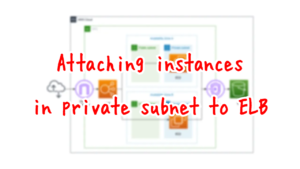
For information on how to attach the EC2 instances in the private subnet to the ALB and how to run yum on the EC2 instants in the private subnet, please refer to the above page. The difference is that we are using path-based routing. Therefore, this page will focus on the content related to it.
When doing path-based routing, the following two resources are the key.
- Target group
- Listener rules
We will check them in order.
Target Group
In this configuration, we will separate the two instances into different groups. Therefore, the key point is to create two target groups.
Resources:
ALBTargetGroup1:
Type: AWS::ElasticLoadBalancingV2::TargetGroup
Properties:
VpcId: !Ref VPC
Name: !Sub "${Prefix}-ALBTargetGroup1"
Protocol: HTTP
Port: !Ref HTTPPort
HealthCheckProtocol: HTTP
HealthCheckPath: /
HealthCheckPort: traffic-port
HealthyThresholdCount: !Ref HealthyThresholdCount
UnhealthyThresholdCount: !Ref UnhealthyThresholdCount
HealthCheckTimeoutSeconds: !Ref HealthCheckTimeoutSeconds
HealthCheckIntervalSeconds: !Ref HealthCheckIntervalSeconds
Matcher:
HttpCode: !Ref HttpCode
Targets:
- Id: !Ref Instance1
TargetType: instance
ALBTargetGroup2:
Type: AWS::ElasticLoadBalancingV2::TargetGroup
Properties:
Name: !Sub "${Prefix}-ALBTargetGroup2"
...
Code language: YAML (yaml)No special configuration is required to perform path-based routing. This time, we will create two target groups with exactly the same settings.
Listener Rules
In the listener rule, set the URL and the corresponding target group.
Resources:
ALBListener:
Type: AWS::ElasticLoadBalancingV2::Listener
Properties:
DefaultActions:
- TargetGroupArn: !Ref ALBTargetGroup1
Type: forward
LoadBalancerArn: !Ref ALB
Port: !Ref HTTPPort
Protocol: HTTP
ALBListenerRule1:
Type: AWS::ElasticLoadBalancingV2::ListenerRule
Properties:
Actions:
- TargetGroupArn: !Ref ALBTargetGroup1
Type: forward
Conditions:
- Field: path-pattern
PathPatternConfig:
Values:
- /instance1/*
ListenerArn: !Ref ALBListener
Priority: 1
ALBListenerRule2:
Type: AWS::ElasticLoadBalancingV2::ListenerRule
Properties:
Actions:
- TargetGroupArn: !Ref ALBTargetGroup2
Type: forward
Conditions:
- Field: path-pattern
PathPatternConfig:
Values:
- /instance2/*
ListenerArn: !Ref ALBListener
Priority: 2
Code language: YAML (yaml)As a prerequisite, we need to set the default action, i.e. the default traffic destination, for the listener resource, which can be set in the DefaultActions property. In this case, we will set the ALBTargetGroup1.
In the TargetGroupArn property, specify the target group to be targeted. The associated URL can be set in the Conditions property, where the “path-pattern” is specified in the Field property and the URL is specified in the PathPatternConfig property.
To summarize the above, we will set the following.
- /: ALBTargetGroup1(Instance1)
- /instance1/:ALBTargetGroup1(Instance1)
- /instance2/: ALBTargetGroup2(Instance2)
(Reference) Instance initialization
We will configure two EC2 instances as a web server, and we will do this with UserData.
Resources:
Instance1:
Type: AWS::EC2::Instance
Properties:
UserData: !Base64 |
#!/bin/bash -xe
yum update -y
yum install -y httpd
systemctl start httpd
systemctl enable httpd
echo 'path: "/"' >> /var/www/html/index.html
ec2-metadata -i >> /var/www/html/index.html
mkdir /var/www/html/instance1
echo 'path: "/isntace1/"' >> /var/www/html/instance1/index.html
ec2-metadata -i >> /var/www/html/instance1/index.html
Instance2:
Type: AWS::EC2::Instance
Properties:
UserData: !Base64 |
#!/bin/bash -xe
yum update -y
yum install -y httpd
systemctl start httpd
systemctl enable httpd
mkdir /var/www/html/instance2
echo 'path: "/isntace2/"' >> /var/www/html/instance2/index.html
ec2-metadata -i >> /var/www/html/instance2/index.html
Code language: YAML (yaml)After installing and starting Apache with yum, create and place HTML files in each directory.
What you need to pay attention to is the position where you place the contents. It must be placed at the location corresponding to the URL mentioned above.
The path pattern is used to route requests but does not alter them. For example, if a rule has a path pattern of /img/*, the rule forwards a request for /img/picture.jpg to the specified target group as a request for /img/picture.jpg.
Listeners for your Application Load Balancers
Following the above, place the HTML file at the location corresponding to the URL as seen from the document root.
Architecting
We will use CloudFormation to build this environment and check the actual behavior.
Create CloudFormation stacks and check resources in stacks
We will create a CloudFormation stack.
For information on how to create a stack and check each stack, please refer to the following page

After checking the resources of each stack, the information of the main resources created this time is as follows.
- ALB: fa-029-ALB
- Target group 1: fa-029-ALBTargetGroup1
- Target group 2: fa-029-ALBTargetGroup2
- Instance 1: i-06542b7318333fd34
- Instance 2: i-0d3bdfef3f2f83533
We will also check the resource creation status from the AWS Management Console. First, we will check the ALB.

The ALB has been created.
Next, we will check the listener rules. You can access the rules from the Listener page.
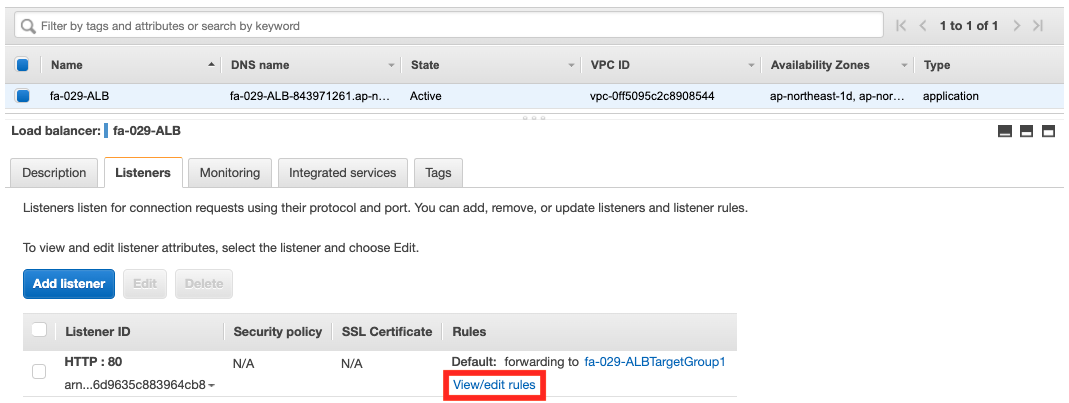
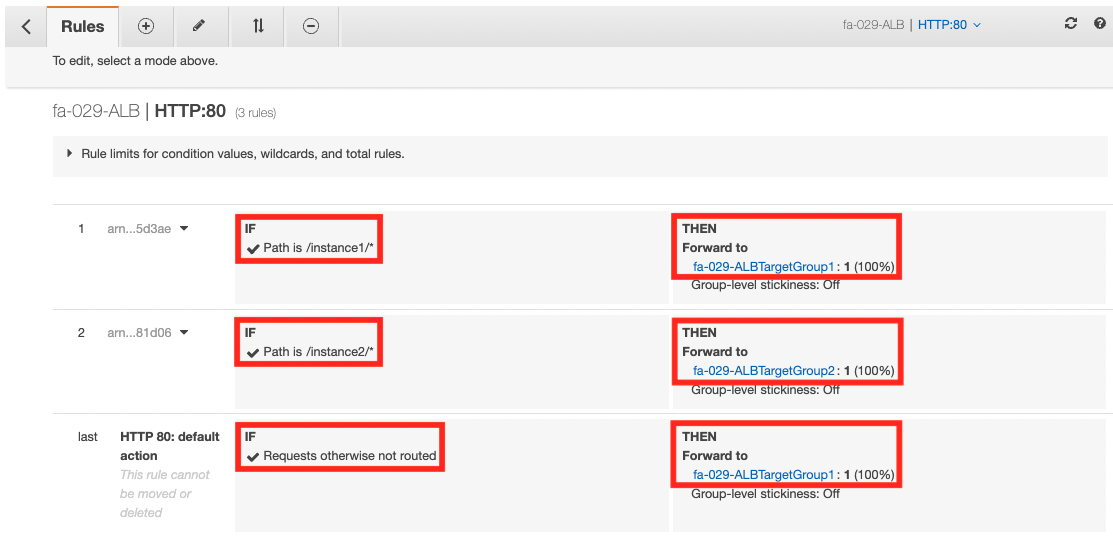
Next, check the target groups.
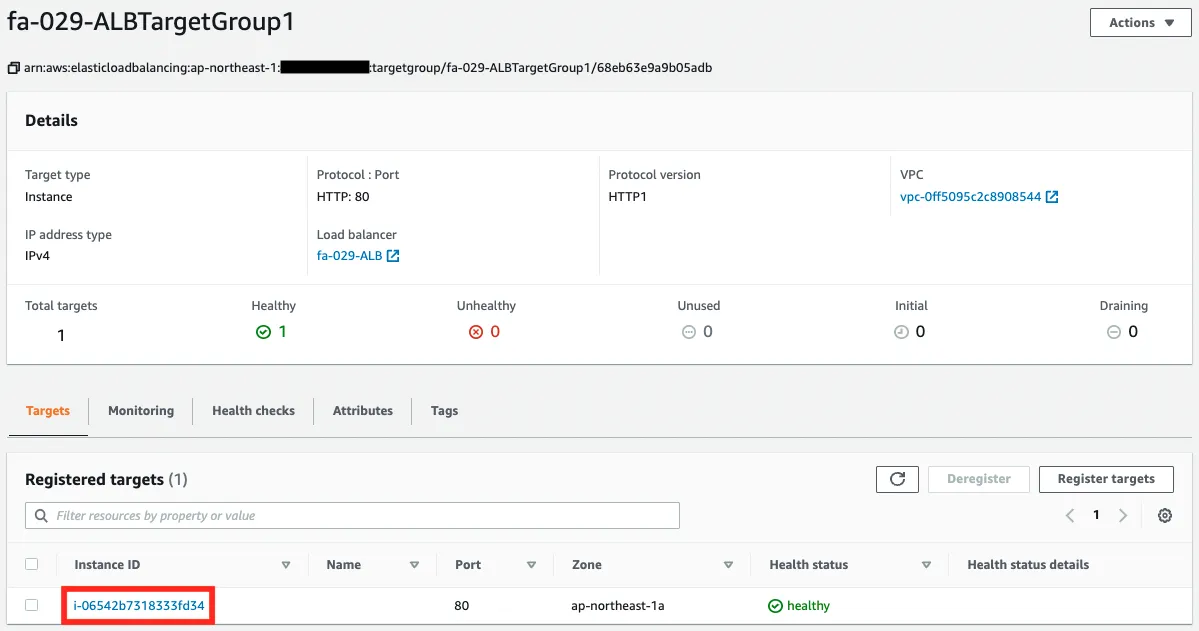
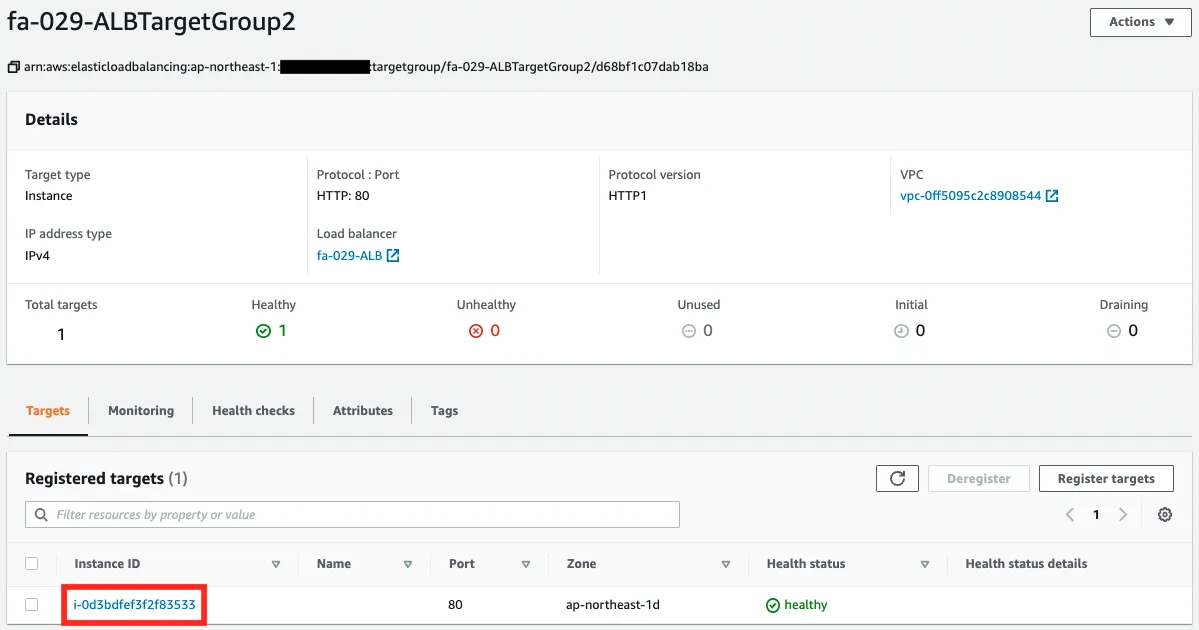
You can see that instances have been registered in each target group.
Operation check
Now that everything is ready, let’s access the ALB.
First is the root page (“/”).

We got a response from instance 1. This means that the traffic has been routed to instance 1 registered in target group 1, as configured in the default action.
Next, access “/instance1/”.

We received a response from instance 1 as well. According to the first line of the listener rule, the traffic was routed to target group 1.
Finally, access “/instance2/”.

The response came from instance 2. It was routed to target group 2 according to the second line of the listener rule.
Summary
We have now confirmed how to forward traffic to multiple target groups using path-based routing in ALB.